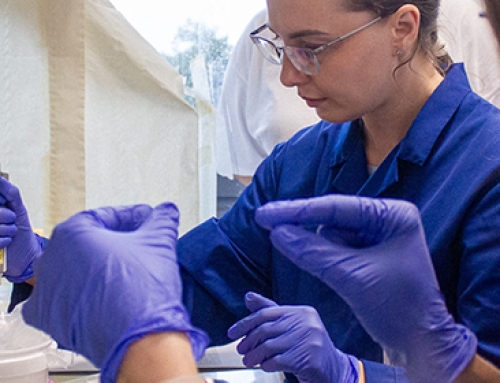Following the spread of highly pathogenic H5N1 influenza virus (HPAI) in cattle farms in the United States (US), the Istituto Zooprofilattico Sperimentale delle Venezie (IZSVe) and the Istituto Zooprofilattico Sperimentale della Lombardia ed Emilia-Romagna (IZSLER), in agreement with the Ministry of Health, have jointly agreed to organise experimental tests on cattle and raw milk in order to produce scientific data useful for risk assessment and accurate diagnosis, should cases similar to those in the US be detected in Italy.

Following the spread of highly pathogenic H5N1 influenza virus (HPAI) in cattle farms in the United States (US), the IZSVe and the IZSLER are orgaising experimental tests on cattle and raw milk. The IZSVe is carrying out a serological survey to verify if exposure of dairy cattle to the H5N1 HPAI virus can be observed. To date, more than 3,200 bovines have been tested in the provinces of Verona, Vicenza and Padova, all giving negative results.
These studies aim to enhance the existing body of knowledge and provide an effective and timely response in case of a health risk using validated laboratory methods. At present, there is no evidence of infection, not even of past infection, in the cattle population in Europe. To date, the circulation of the H5N1 virus in dairy cows has only been reported in the US.
Serologic tests in the bovine population
In the last weeks, the National Reference Centre for Avian Influenza and Newcastle Disease (NRC AI/ND) of the IZSVe has developed virological and serological tests for a correct diagnosis of H5N1 HPAI virus infection in cattle. The NRC AI/ND is carrying out a serological survey to verify whether in the Italian territories where past outbreaks of avian influenza in poultry and wild birds had been reported an exposure of dairy cattle to the H5N1 HPAI virus has also been observed.
To date, more than 3,200 bovines have been tested in the provinces of Verona, Vicenza and Padova, all giving negative results.
Testing raw milk for cheese production
Analyses conducted in the US have confirmed the presence of avian influenza virus in raw milk from infected cows. US authorities have indicated pasteurization of milk and any milk product from infected herds as the most effective process to prevent transmission of the virus to humans. Standard pasteurization methods have proved to be effective in inactivating the virus whenever present.

The IZSLER is conducting experimental trials to measure the abatement of the virus in the production process of mature raw milk cheeses. Preliminary results indicate that even with the thermal process alone there is a marked reduction of the viral load in the milk. Verification of the inactivating power of the other production steps is in progress.
In Italy cheeses are also produced from unpasteurised milk, among these mature raw milk cheeses which are famous worldwide in the agro-food industry.
However, the production process involves a series of steps that, according to several studies previously conducted on other microorganisms, appear to be suitable in eliminating virus infectivity should Italian dairy farms also become infected.
Such inactivating steps include i) the initial skimming of the milk, ii) coagulation, iii) cooking and whey storage of the curd, iv) salting of the cheese and its maturation for several months or even years.
In order to provide scientific evidence to demonstrate the ability of effectively reducing the risk of infection, the IZSLER is conducting experimental trials to measure the abatement of the virus in the production process of mature raw milk cheeses. Preliminary results indicate that even with the thermal process alone there is a marked reduction of the viral load in the milk. Verification of the inactivating power of the other production steps is in progress.
Updates on the preliminary results of surveillance in animals and on the experimental activities on raw milk will be released in the coming weeks. It is also important to underline that, on the basis of the information available, the World Health Organization (WHO) considers the risk posed by the H5N1 virus to the general human population to be low, and to people who may be exposed to infected animals, such as farmers, veterinarians and industry workers, to be low to moderate.





![IZSVe at the First FAO Global Conference on animal health, vaccines, and sustainable livestock [Gallery]](https://www.izsvenezie.com/wp-content/uploads/2024/09/fao-global-conference-500x383.jpg)

